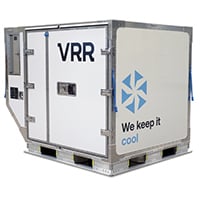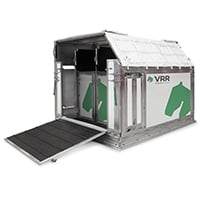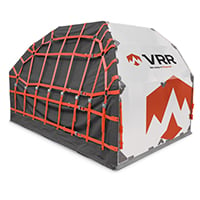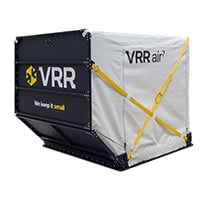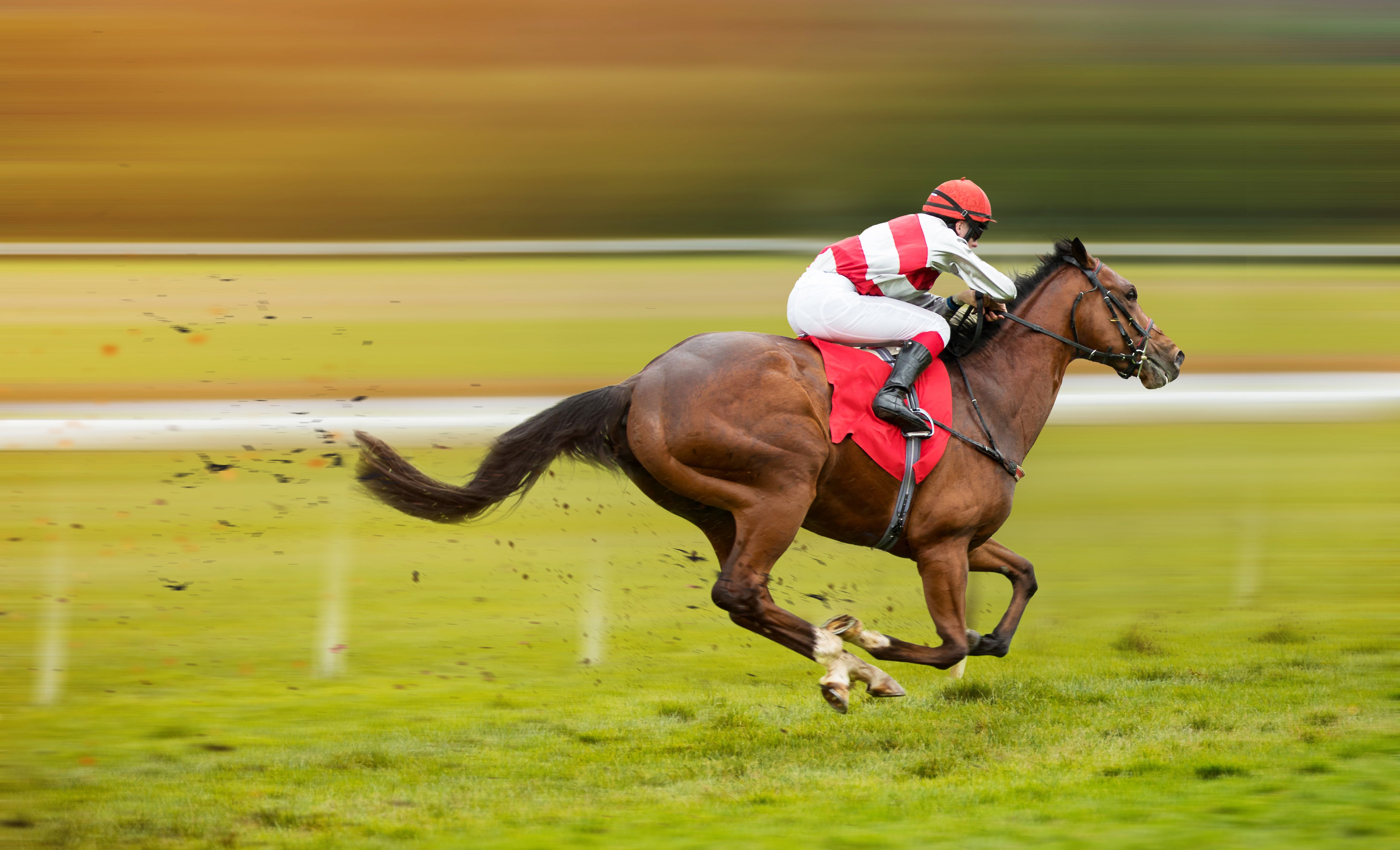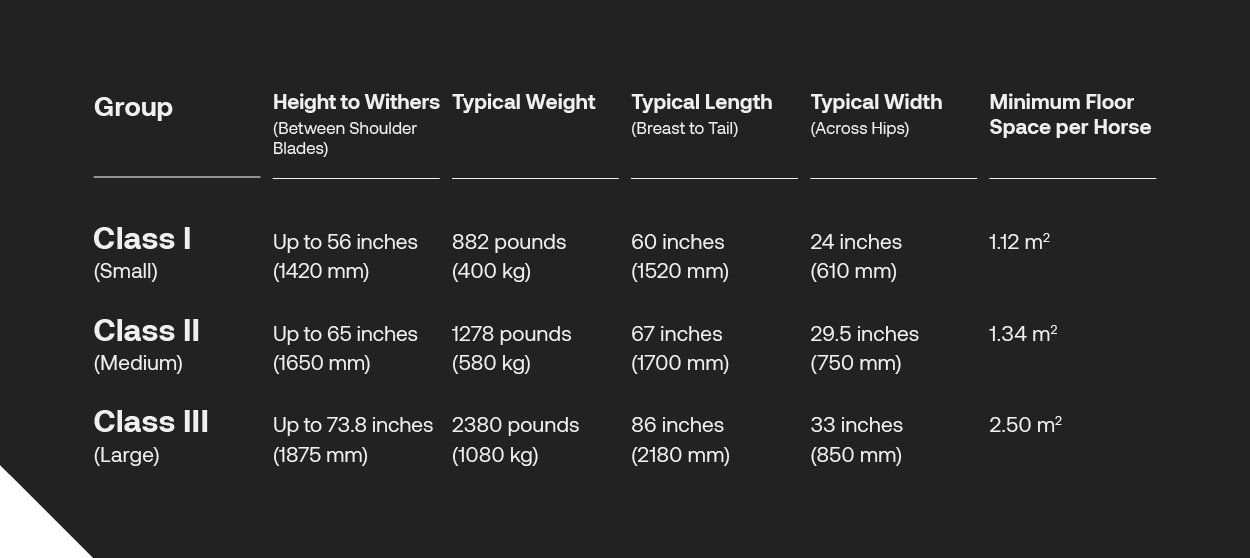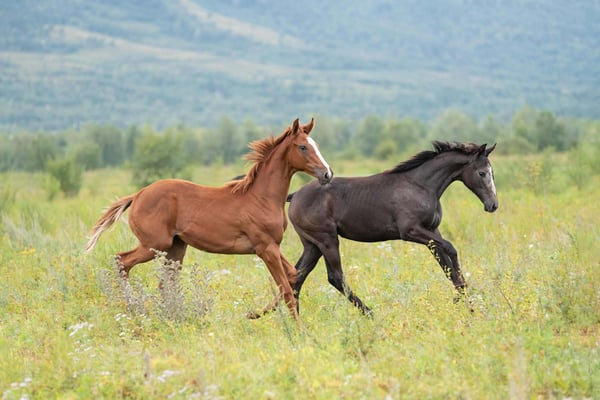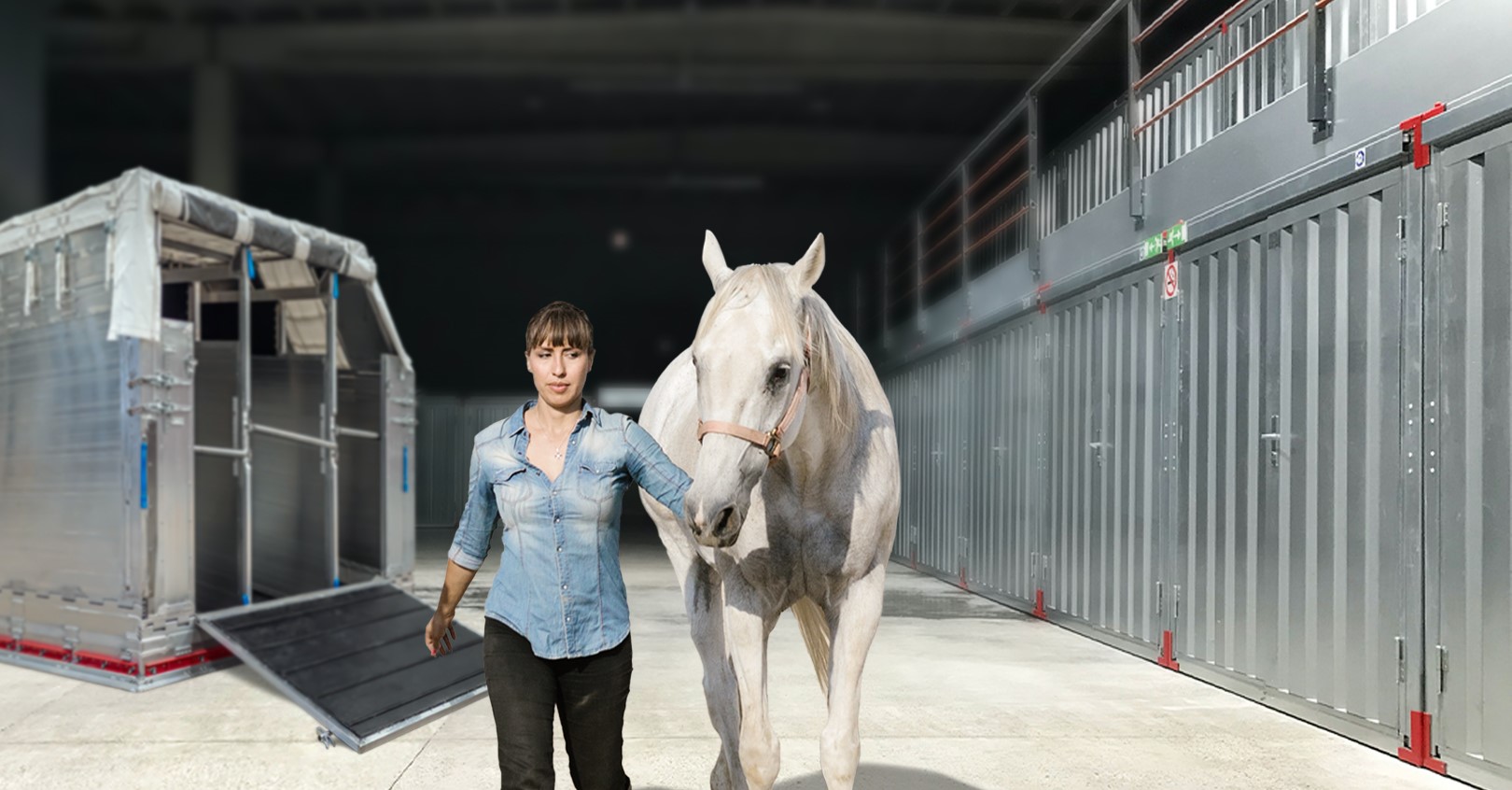When it comes to travelling on airplanes, horses have pretty much the same needs as humans. Both want comfort and extra leg room, especially on long-haul flights. And both want to feel safe and secure. Horses may be consigned to a horse stall in the cargo hold for the duration of the flight, but their desire for first-class treatment is no less real.
However, transporting horses by air is a precarious business. There’s always the risk that the animal will become distressed or be physically injured. It’s little wonder that owners and equine transporters think carefully about the type of horse stall to use for such occasions. But what features ensure the welfare and safety of the horse? This article explains what you need to consider when selecting an air-cargo horse stall.
Features that keep horses safe, calm and comfortable on airplanes
It doesn’t matter if horses are flying for an international equestrian competition or for recuperation in a warm location, one thing is constant: they should arrive in tip-top condition. The horse stall plays a crucial role in this. It should function as first-class accommodation throughout the entire trip. But what aspects of a stall put the horse’s wellbeing first? Here are the main comfort features to look for.
No time to read the whole article? Just download the infographic and get started on upgrading your horses comfort quickly.
Maximum internal padding and protection
All surfaces should be as soft and cleanable as possible. There should be no fixed protrusions, which can cause injury, and reinforcing metal plates should be covered by protective material. The floor of the unit must be made of skid-proof, puncture-resistant and noise-absorbing material. The best floors are also vibration damping. This prevent the animals from feeling the rollers of the Cargo Loading System and becoming unsettled as the stall is loaded into the aircraft.
Adjustable ventilation
The temperature, humidity and CO2 levels of an aircraft’s bulk area—where animals are carried—are optimised according to animal species. Even so, horses can be exposed to considerable warmth during flight, and overheated horses get stressed. Since horse stalls are normally closed containers, make sure there is sufficient slatted or meshed ventilation for each horse. It’s also important that this ventilation can be partially shut down to avoid draughts.
Low entrance and sufficient visibility
It can be stressful boarding a plane, whether you’re a two-legged or four-legged passenger. There’s a lot going on at once and there’s little room to manoeuvre. What’s more, horses have to first be loaded into a “narrow box” (i.e. the stall) before they can even board. To make the loading process as stress-free as possible for them, the step from the ground to the ramp and from the ramp to the loading floor should be as low possible. A light-coloured roof and the ability to open the other end of the stall can also help the loading process because it enables horses to see into the stall.
Sniffer boards, breast doors and safe kick areas
Horses tend to bite each other when stressed. They may even become unruly and kick out, especially when a mare is placed next to a stallion. A simple panel acting as a sniffer board can solve this. In the “kick area” of the horse, the walls and ramp should be coated or protected with an impact-absorbing material to minimise deformations. Likewise, material should be non-resonant to discourage kicking. Finally, look for a wall, bar or breast cushion which can restrict the forward movement of the horse.
Inflight meals and easy groom access
Shipping a horse overseas usually involves a flight of at least 8-12 hours, so the ability for grooms to provide hay and water during ground handling and the flight itself is essential. Make sure the stall has attachment points from which hay, ropes or nosebags can be hung, plus an easily accessible door on each side so grooms can reach the head(s) of the horse(s) at any time. Larger, premium stalls provide separate working areas for the grooms, increasing comfort and safety for all.
Watertight floor pan and splash-proof door
Horses don’t have the luxury of a separate toilet area like us humans. However, the aircraft must be protected from dirt and corrosion. Therefore, it’s imperative that the stall you select can contain all fluids and droppings. Features to look for include absorption material in a watertight tray and a splash-proof rear door that overlaps the inside of the floor pan. Ask the supplier for leak testing results or methods as proof. 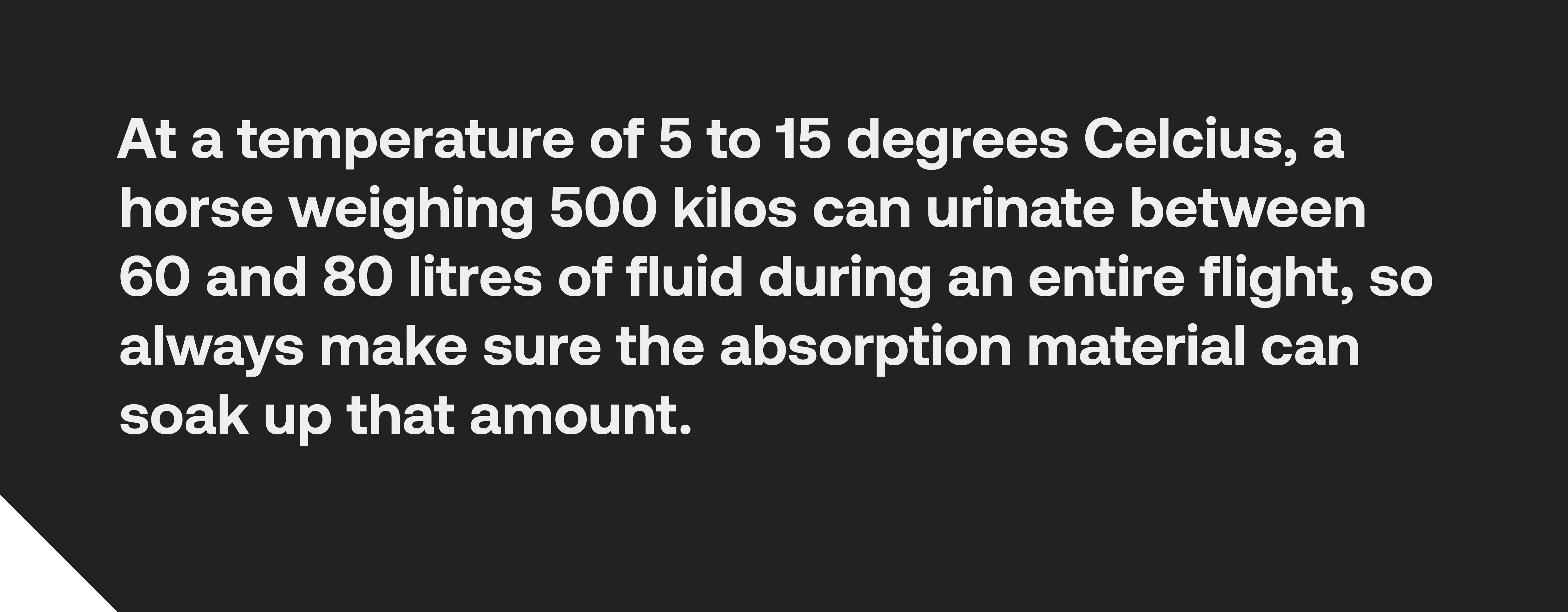
Configuring stalls to every size of horse
Horses come in all sizes. But large or small, they all deserve safety and comfort. According to aerospace recommended practice (SAE – ARP 1621C) their sizes are classified as follows:
Of course, having a dedicated stall for every size of horse would be inefficient. More practical (and cost-effective) is the ability to rearrange the interior of the stall to make it suitable for the size and number of horses being transported.
With this in mind, check that the divider walls can be easily removed or relocated so you can align the width of the compartments with the width of the horses. Some of the most flexible stalls can be modified into a two-horse, three-horse and/or open space configuration, maximising floor space.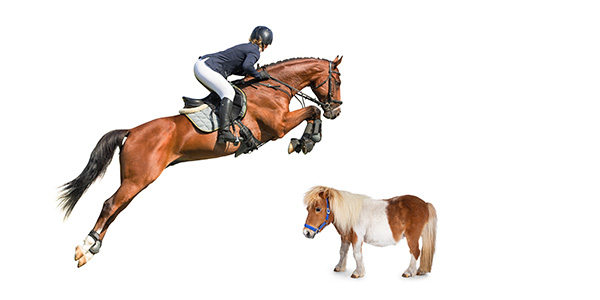
Selecting the horse stall that fits your air cargo needs
Naturally, the welfare of the horses comes first. But the stall that you buy should also meet your own operational needs. There are three main factors that determine this: (1) The type of aircraft used for transportation; (2) Whether the stall is empty or loaded on the return journey; and (3) Compliance with aerospace regulations.
A stall that fits your fleet perfectly
The maximum outer contour of a horse stall is dictated by the internal contour of the aircraft’s hold and the positioning of the stall in the bulk area. Fortunately, the regulatory authorities have standardised the contour of all aircraft containers (including horse stalls) to make the best use of limited space.
For most types of aircraft there is at least one corresponding contour, if not several. However, since horses are always flown on the main deck, this narrows the number of suitable contours even more. In practice, there are three standard contours which are commonly used for shipping horses by air. These are the J-contour, A-contour and Y-contour.
If you’re not sure which container corresponds with the aircraft that you use, go to our handy compatibility search tool for a quick overview.
A stall that gives you the highest utilisation of your ULD fleet
Horse stalls are expensive assets, so it’s logical that you want to use them as much as possible. Understanding your transport flows is crucial when deciding what type of stall to buy. Are the horses you’re transporting traveling on a one-way or two-way ticket? In other words, will your stalls be returned empty or loaded?
The return of empty containers is always a challenge, not least because of the expense. Do you wait until you have another horse air transport, or do you ship the empty stall back as soon as possible? If this is a familiar dilemma in your operations, consider a stall with fully collapsible features like our HML/HMR or HMC (HMA). They do not compromise on the horse’s comfort. But, once folded, they can be stacked easily on the lower decks of almost any plane, saving you money and giving you an excellent opportunity to fully utilise your equipment.
A stall that ensures flight safety
Just like any other aircraft container, horse stalls must comply with certification standards—for the sake of not only the horse but also the plane. To guarantee that your horse stall meets the minimum requirements of transporting horses by air properly and safely, it should be either EASA or FAA certified. View the differences between certified horse containers, uncertified horse containers and customised aircraft.
The horse stall’s manufacturer should provide you with a certificate that shows the part number of the equipment and the approval of the authorities. If you have any doubts at all, make sure you ask questions and ask for proof that the equipment is compliant with certification and other standards.
To learn more about the importance of certification, check out these articles Debunking the myths of certified ULDs part I and Debunking the myths of certified ULDs part II. You can also read ISO standard ARP 1621, which sets out the minimum requirements for horse stalls necessary to maintain a structurally safe operation and protect aircraft from corrosion created by waste spills.
Wrapping it all up
Choosing the right stall to transport horses by air can’t be done in a rush. Factors to consider include the features that keep horses safe, calm and comfortable; the possibility to configure the stall according to the width and number of the horses being transported; and your own operational needs.
If you can tick all those boxes, you know you’ve got the right stall. Not sure where to start? Check out our “Horse Stalls” range of ULDs. Each one of our horse stalls provides the best level of animal welfare and groom safety possible.
Don’t forget that you can always contact one of our horse stall specialists. They’d be happy to walk you through your choices.

